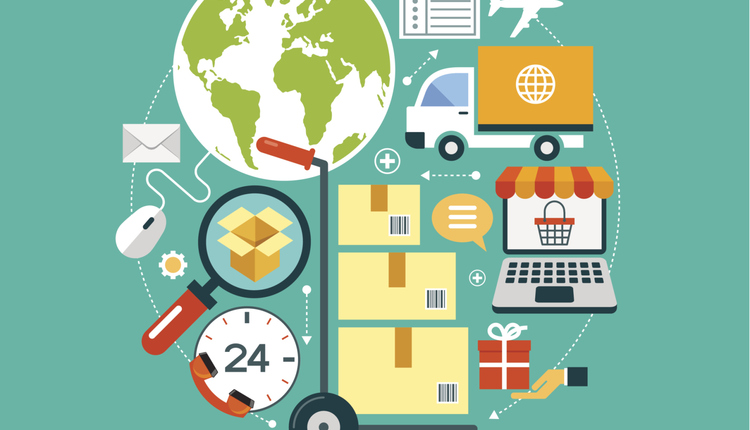This article originally appeared in the May/June issue of PARCEL.
Up in the sky, a cloud can obscure the light of the sun, darkening one’s view. Down here in our digital world, it’s just the opposite — the cloud can shed light on information that has been hidden, making the view clearer. Shipping shows us some excellent examples of how a digital cloud can brighten a business owner’s day.
The cloud is basically a single repository of data and applications, which can be accessed and added to from a range of mobile and desktop devices by everyone permitted to join. In shipping, carriers are already leveraging cloud technology to create greater efficiency in the supply chain. Take notification tools, for example. In the past, carriers emailed a tracking number to recipients, who then had to go to the carrier website and input that number to find out where the package or mail piece was and when it would be delivered.
Now, the shipment itself becomes the trigger for notification. The cloud is enabling more data to be shared between carriers and recipients, and it then makes that data immediately available through automated applications triggered by real-world events. As soon as the parcel goes out, the recipient is notified by the carrier from the point of shipment. The carrier can link your supply chain to every point in the delivery process.
The cloud even makes the reverse logistics of returns more efficient. Companies can prepare to receive them and ship out exchanges as soon as the returns arrive and are checked.
In the job of managing the supply chain, the cloud is enabling you to use data you haven’t even seen before. Each carrier has its own cloud to leverage and share data and provide a better experience for their clients. However, shippers typically work with a variety of carriers, and each of their systems is different. Fortunately, there are now tools on the market that can standardize the interfaces for all those carrier systems. Such a tool helps you manage seamlessly by giving you a single gateway to access all the carriers’ data and services. This allows you to readily complete a comprehensive cost analysis based on all your delivery options.
CLOUD BENEFITS BEYOND THE SUPPLY CHAIN
Cloud-based solutions are finding their way beyond just shipping parcels in the supply chain and are now also driving the reinvention of mail. These approaches are linking all the data sets that record what’s being delivered, where, and when.
USPS is leveraging the cloud for its Informed Delivery and Informed Visibility capabilities, scheduled to be demonstrated at the upcoming National Postal Forum. Its current IMB system can predict delivery days, but these new services will use data and applications in the cloud to tell you the hour a mail piece or parcel will arrive. In addition, USPS will be able to link important details of the mail piece to the notification. For example, being able to tell a recipient a credit card is coming should substantially reduce the risk involved in such mailings.
In addition, we see many clients with back office shipping and warehouse-based fulfillment operations that enjoy discounted contract rates with carriers. And while other divisions and departments of these companies often do a substantial amount of office shipping, they don’t always take advantage of the negotiated carrier rates. That’s because there’s been no simple way to connect all of a company’s shipping activities to be able to leverage carrier discounts across the enterprise.
But now the cloud enables all the sending data of an organization to reside in one place. Consolidating this office and supply chain data can give you more leverage with a carrier. Office sending is more attractive to carriers since it’s a higher margin service, so they’re more prone to offer you better discounts. However, in order to link all the supply chain and office sending data, you need access to the different carrier systems.
Here, the same tools that standardize the interface to all carrier systems for the supply chain can be used throughout the company. These cloud-based solutions are very cost-efficient Software-as-a-Service (SaaS) offerings, which are surprisingly easy to implement — key for deploying them company-wide. Thanks to these tools, the work your supply chain people have done to lower carrier costs doesn’t have to stop at the warehouse.
Supply chain shippers can also use the cloud to extend its benefits across their own operations. With a standardized interface, shippers who employ distributed warehousing at multiple sites can quickly access all carrier information in the cloud. This makes it easy to make better decisions about which warehouse to ship from, optimizing for cost and time of delivery to each recipient. You can even factor in the option of shipping items from different retail locations. Very sophisticated decisions such as these can now be made because the data — all the criteria for those decisions — can be readily available in one place.
The advantages that cloud-based solutions have brought to the supply chain have created broad, unexpected consequences. Companies are leveraging those advantages across the whole organization, encompassing multiple locations and a mobile workforce. This gives managers more visibility and control — and that delivers lower costs to the company and a better experience to their customers. Supply chain shipping, where the cloud is well-established, has indeed set the stage for a slew of benefits that has expanded to include office shipping and more throughout the organization.
CHRIS GILES is Vice President, Global Product Management, Pitney Bowes. He has over 20 years of experience in the industry and is a recognized thought leader. For more information, please visit www.pitneybowes.com













